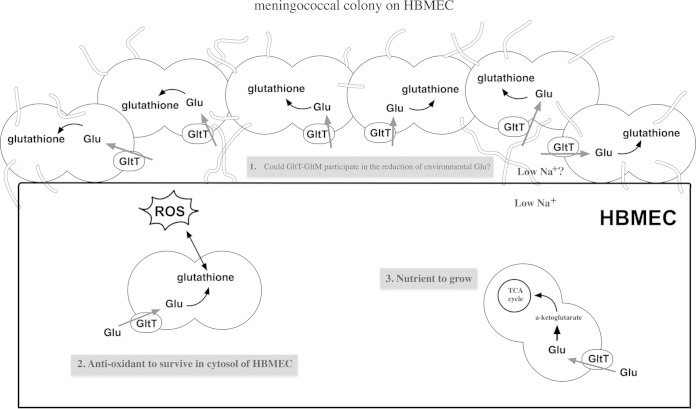FIG 10.
Schematic representation of meningococcal infection of human cultured endothelial cells. During the course of the meningococcal invasion of human cells, N. meningitidis adheres to and forms large colonies on the endothelial cells. (Step 1) The glutamate concentrations around (possibly beneath) the colonies may be reduced by glutamate uptake via meningococcal GltT-GltM, which might stimulate host cell cytoskeleton rearrangements to enhance meningococcal internalization into the host cells. (Step 2) During adhesion to and invasion of HBMEC, l-glutamate obtained via GltT-GltM is also converted to glutathione in N. meningitidis. After internalization, the accumulated glutathione in N. meningitidis plays a role as an antioxidant in survival in the host cells. (Step 3) Moreover, N. meningitidis also utilizes intracellular glutamate as a nutrient by uptake via GltT-GltM. Thus, the meningococcal GltT-GltM performs multiple functions in internalization into host cells.

